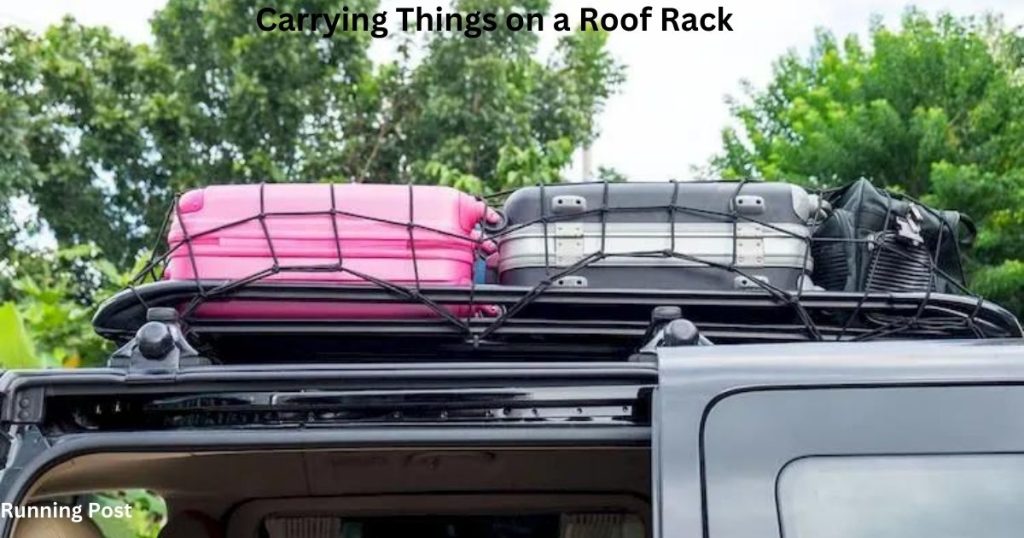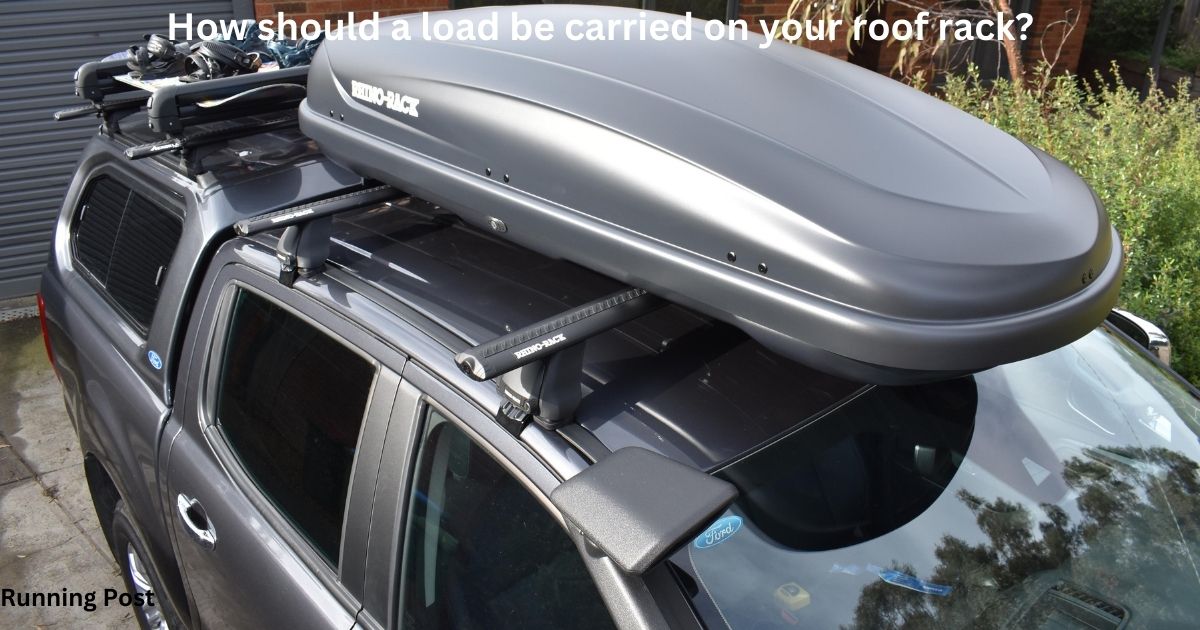| B: Securely fastened with suitable restraints | D: Loaded towards the rear of the vehicle |
Introduction
Importance of Proper Roof Rack Usage
Using a roof rack correctly is crucial for both safety and efficiency. Roof racks increase your vehicle’s cargo capacity, allowing you to transport large items like bikes, luggage, and sports equipment. Proper use ensures that your load is secure, reducing the risk of items falling off or shifting during transit. This not only protects your cargo but also maintains your vehicle’s stability, which is vital for safe driving. Additionally, adhering to proper roof rack usage can prevent damage to your vehicle and ensure compliance with traffic laws.
Points:
- Increased Cargo Capacity: Roof racks allow for carrying large or bulky items.
- Safety: Properly secured loads reduce the risk of accidents.
- Vehicle Stability: Ensures that the load does not affect the vehicle’s balance.
- Compliance: Helps meet legal requirements for cargo transport.
Securing a Load on a Roof Rack
Choosing the Right Restraints
Selecting appropriate restraints is essential for keeping your load secure. Various types of restraints are available, including straps, bungee cords, and cargo nets. Each type has its advantages and limitations. Straps, such as ratchet straps, provide a tight and secure hold, making them ideal for heavy or bulky items. Bungee cords are flexible and easy to use but might not offer as much stability for larger loads. Cargo nets can cover a broad area, which is useful for irregularly shaped items. Quality and strength are crucial factors in choosing the right restraint to ensure that it can handle the weight and prevent shifting.
Points:
- Types of Restraints: Straps, bungee cords, and cargo nets.
- Straps: Provide tight and secure hold.
- Bungee Cords: Flexible but may lack stability.
- Cargo Nets: Good for irregular shapes.
- Quality and Strength: Essential for safe transport.
Techniques for Securing Your Load
How to Use Ratchet Straps Effectively
Ratchet straps are highly effective for securing heavy or bulky items. To use them correctly, first, ensure the load is evenly distributed on the roof rack. Place the strap over the load and hook it to the rack’s anchor points. Use the ratchet mechanism to tighten the strap, making sure it is snug but not over-tightened, as this can damage the load or the rack. Regularly check the straps during transit to ensure they remain secure and adjust as necessary. This technique provides a firm hold and minimizes the risk of shifting.
Points:
- Even Distribution: Ensure load is balanced.
- Correct Placement: Hook straps to anchor points.
- Tightening: Use ratchet mechanism carefully.
- Regular Checks: Adjust straps as needed.
Best Practices for Using Bungee Cords
Bungee cords are versatile and convenient but may not always provide the most secure hold. When using bungee cords, ensure they are the appropriate length for your load. Stretch the cord over the item and hook it securely to the roof rack. Avoid overstretching, as this can cause the cord to snap or lose its effectiveness. For added security, use multiple bungee cords to distribute the load evenly. Regularly inspect the cords for signs of wear or damage and replace them if necessary.
Points:
- Appropriate Length: Match cord length to the load.
- Secure Hooking: Ensure hooks are well-attached.
- Avoid Overstretching: Prevent snapping.
- Use Multiple Cords: For even distribution.
- Inspection: Check for wear and tear.
Using Cargo Nets: Pros and Cons
Cargo nets are useful for securing irregularly shaped items and covering a larger area. They provide a flexible solution for items that may not fit neatly within a standard restraint system. However, cargo nets may not offer the same level of security as straps for heavy loads and can sometimes shift if not properly adjusted. It’s essential to ensure the net is tightly secured and adjusted to fit the load closely. Regularly check the net during transit to maintain its effectiveness.
Points:
- Flexibility: Good for irregular shapes.
- Coverage: Covers a larger area.
- Security: May not be as secure as straps.
- Adjustment: Ensure tight fit.
- Regular Checks: Maintain effectiveness.
Carrying Things on a Roof Rack

Types of Items Suitable for Roof Racks
Roof racks can carry a variety of items, including luggage, sporting equipment, and travel accessories. Luggage and cargo bags are common, as they can be easily strapped down. Sporting equipment such as bikes or kayaks requires specific carriers or mounts designed for stability and safety. Travel accessories like roof boxes offer enclosed storage that protects items from the elements and provides additional security. Each type of item may require different securing methods and equipment, so it’s important to choose the right setup for your needs.
Points:
- Luggage and Cargo: Common items for roof racks.
- Sporting Equipment: Requires specific mounts.
- Travel Accessories: Roof boxes offer enclosed storage.
- Securing Methods: Vary based on item type.
Arranging Items on the Roof Rack
Proper arrangement of items on your roof rack is key to safe transport. Balance the load evenly from front to back and side to side to avoid affecting the vehicle’s handling. For odd-shaped items, ensure they are securely fastened to prevent movement during transit. Placing heavier items closer to the vehicle’s roof and lighter items towards the outer edges can help maintain stability. Ensuring that the load does not exceed the roof rack’s weight limit is crucial for safe driving.
Points:
- Even Balance: Distribute load evenly.
- Secure Odd-Shaped Items: Prevent movement.
- Weight Distribution: Heavier items closer to the roof.
- Weight Limits: Adhere to rack’s capacity.
Loading Luggage on a Roof Rack
Preparing Your Luggage
Before loading luggage onto a roof rack, select the right accessories such as cargo boxes or bags that suit your needs. Pack items efficiently to maximize space and minimize shifting. Use waterproof covers if you anticipate adverse weather conditions to protect your luggage. Ensure that the load is evenly distributed and packed securely to prevent it from moving or becoming a hazard during travel.
Points:
- Select Accessories: Cargo boxes or bags.
- Efficient Packing: Maximize space, minimize shifting.
- Weather Protection: Use waterproof covers.
- Secure Packing: Prevent movement during travel.
Loading Techniques
When loading luggage onto a roof rack, lift items carefully to avoid injury. Place heavier items first and ensure they are centered and evenly distributed. Secure each item with appropriate restraints, and double-check that everything is tightly fastened before setting off. Avoid overloading the roof rack, as this can affect vehicle handling and increase the risk of accidents.
Points:
- Careful Lifting: Avoid injury.
- Heavier Items First: Center and distribute evenly.
- Proper Restraints: Secure items tightly.
- Avoid Overloading: Ensure safe handling.
Securing Luggage Properly
For securing luggage, consider using roof boxes for enclosed storage, which offers protection from the weather and added security. Alternatively, cargo bags are more flexible but may need additional protection from rain or dust. Ensure that whichever option you choose, it is properly fastened and secured. Check for any signs of wear or loose fittings before driving.
Points:
- Roof Boxes: Offer weather protection and security.
- Cargo Bags: Flexible but may need extra protection.
- Proper Fastening: Ensure secure attachment.
- Regular Checks: Inspect for wear and looseness.
You Also Like It:
How would under-inflated tyres affect your vehicle?
Which driving technique can help you save fuel?
What to Carry on Your Roof Rack
Common Items and Their Requirements
Roof racks are versatile for carrying various items, such as luggage, outdoor gear, and specialized equipment. For luggage, ensure it fits within the rack’s capacity and is securely fastened. Outdoor gear like kayaks or bikes requires specific mounts designed for stability and ease of access. Specialized equipment, such as roof-top tents or solar panels, may need additional accessories or mounting systems.
Points:
- Luggage: Ensure it fits and is secure.
- Outdoor Gear: Requires specific mounts.
- Specialized Equipment: May need additional accessories.
- Fit and Security: Adhere to rack’s capacity.
Avoiding Overloading
To avoid overloading, always check your roof rack’s weight limit and adhere to it. Overloading can negatively impact vehicle handling, fuel efficiency, and safety. Distribute the weight evenly across the rack and avoid stacking items too high. Regularly review your load to ensure it remains within the vehicle’s and rack’s capacity during your journey.
Points:
- Check Weight Limits: Adhere to capacity.
- Impact on Handling: Can affect driving stability.
- Even Distribution: Prevent excessive height.
- Regular Review: Ensure compliance during travel.
Conclusion
Recap of Key Points
In summary, carrying a load on your roof rack requires careful consideration of restraints, load types, and securing techniques. Choose suitable restraints like ratchet straps, bungee cords, or cargo nets, and ensure they are used correctly to secure your load. Properly arrange and distribute your items to maintain vehicle stability and avoid overloading. With these practices, you can safely and efficiently transport your cargo.
Points:
- Choosing Restraints: Use appropriate types.
- Securing Techniques: Ensure tight and correct fastening.
- Item Arrangement: Balance and distribution.
- Avoid Overloading: Adhere to capacity limits.
Final Tips for Safe Roof Rack Usage
To ensure safe roof rack usage, regularly inspect your load and restraints throughout your journey. Adjust as needed to maintain security and stability. Always adhere to your vehicle’s weight limits and follow manufacturer guidelines for your roof rack system. Proper maintenance and usage will enhance safety and prolong the life of your roof rack.
Points:
- Regular Inspection: Check load and restraints.
- Adherence to Limits: Follow weight capacity.
- Manufacturer Guidelines: Use according to instructions.
- Maintenance: Ensures safety and longevity.
FAQs About How should a load be carried on your roof rack
1. How do I secure a load on my roof rack?
To secure a load on your roof rack, use suitable restraints such as ratchet straps, bungee cords, or cargo nets. Make sure to:
- Choose the Right Restraints: Select based on the load type and weight.
- Distribute Evenly: Place the load evenly to maintain vehicle balance.
- Tighten Properly: Use the restraints to ensure the load is snug but not over-tightened.
- Regularly Check: Inspect the load and restraints during transit to ensure they remain secure.
2. What are the best types of restraints for a roof rack?
The best types of restraints for a roof rack include:
- Ratchet Straps: Ideal for heavy or bulky items, offering a secure hold.
- Bungee Cords: Flexible and easy to use but may not be as secure for larger loads.
- Cargo Nets: Useful for irregularly shaped items and covering larger areas. Choose restraints based on the weight and shape of your cargo to ensure safe transport.
3. How should I load luggage onto a roof rack?
When loading luggage onto a roof rack:
- Choose the Right Accessories: Use roof boxes or cargo bags suited to your luggage.
- Pack Efficiently: Maximize space and ensure items are securely packed.
- Lift Carefully: Avoid injury by lifting items properly.
- Balance the Load: Place heavier items first and distribute the load evenly.
- Secure Properly: Use appropriate restraints to keep the luggage in place.
4. What items are suitable for carrying on a roof rack?
Suitable items for carrying on a roof rack include:
- Luggage and Cargo: Standard bags and cases.
- Sporting Equipment: Bikes, kayaks, and skis, often requiring specific mounts.
- Travel Accessories: Roof boxes and bags for additional storage. Ensure that items are securely fastened and within the roof rack’s weight limits.
5. How can I avoid overloading my roof rack?
To avoid overloading:
- Check Weight Limits: Adhere to your vehicle and roof rack’s maximum weight capacity.
- Distribute Weight Evenly: Balance the load to avoid affecting vehicle stability.
- Avoid Excessive Height: Do not stack items too high, which can impact driving.
- Regularly Review: Ensure the load remains within limits during your journey.
You Also Like It:
Where should you park your vehicle at night?
Releated Posts
MAB Instructor Certification: Your Gateway to Professional Crisis Management Leadership
In today’s fast-evolving professional environments—especially in healthcare, mental health, education, and corrections—conflict and aggression can arise without warning.…
Freewayget.com: Your Ultimate Platform for Deals, Discounts, and Digital Products
Introduction to Freewayget.com In today’s fast-paced digital world, finding reliable platforms that offer authentic discounts, deals, and digital…
Affordable & Fast Embroidery Digitizing Services in Your Area
Embroidery digitizing services provide corporations, designers, and people with brilliant embroidery-equipped designs by means of changing art work…
Introduction to hdhub4u nit
In this article, we will delve into the details of hdhub4u nit, exploring its features, benefits, and why…

















